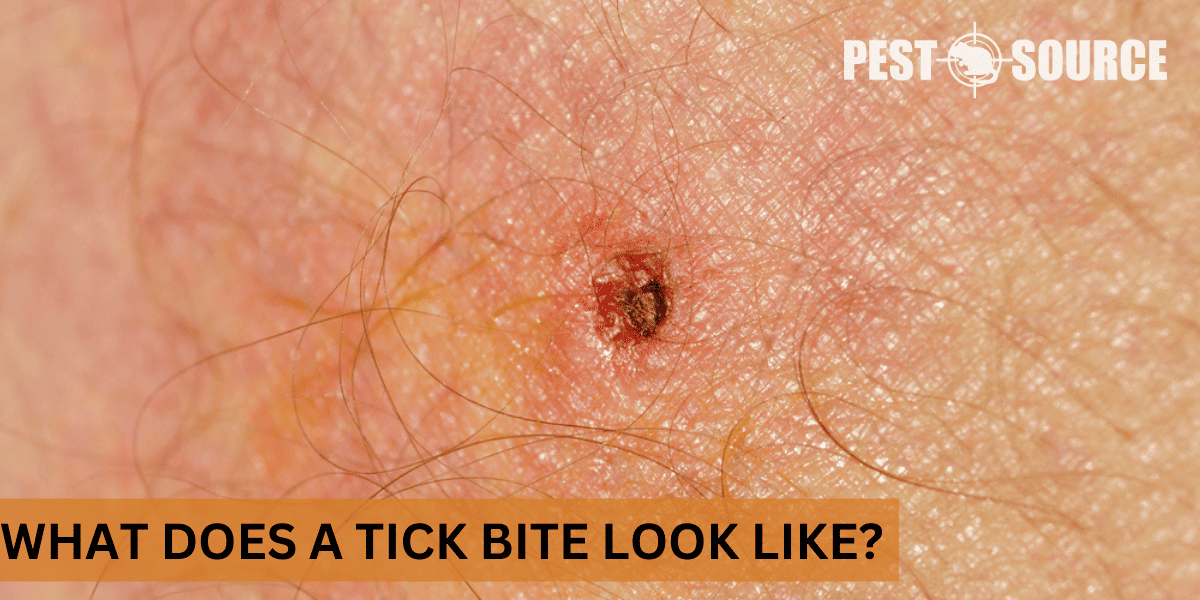Understanding what a tick bite looks like can be the first step in preventing serious tick-borne diseases. Ticks are tiny creatures that can pack a powerful punch when it comes to transmitting diseases. But, what does a tick bite look like?
This helpful guide provides a comprehensive understanding of tick bites, from identifying common features and variations, to recognizing signs of infection and spotting tick-borne disease rashes. Armed with this knowledge, you’ll be better equipped to spot these bites early, possibly averting dangerous health issues connected to ticks. So let’s dig in to ensure you’re informed and prepared.
POINTS
- Ticks are pests that can vary in color and size, and their bites lead to diseases like Lyme disease, Anaplasmosis, and Babesiosis. Therefore, identifying and promptly addressing tick bites is crucial to prevent these diseases.
- A typical tick bite can look like a small, red bump on the skin, sometimes accompanied by itching and swelling. However, the appearance may vary depending on the type of tick and the individual’s skin reaction.
- There are different types of ticks including deer ticks, seed ticks, nymph ticks, wood ticks, and lone star ticks, all with slightly varied bite appearances. Accurate identification can assist in understanding the possible health risks associated with each type.
- Tick bites may appear differently on various parts of the body. An embedded tick appears as a small dark speck on or under the skin. In rare cases, ticks can burrow entirely under the skin, requiring immediate medical intervention.
- An infected tick bite can lead to noticeable symptoms such as rashes, warmth and swelling at the bite area, fever, body aches, and swollen lymph nodes. Among these, a particular concern is the bulls-eye rash associated with Lyme disease. Recognizing these signs early is vital for timely treatment and can avert serious health consequences.
What Does a Tick Bite Look Like?
What Are the Common Features of a Tick Bite?
The typical tick bite will look like a small, red, innocuous bump or welt. It may be hard to spot, especially if the tick has already detached itself. This bite area can sometimes be itchy and swollen.
What Variations Can Occur in the Appearance of Tick Bites?
The appearance of tick bites often varies depending on the individual’s skin response. Some might experience a severe allergic reaction resulting in larger hives or rash, while others could show minimal signs of a bite.
How Does a Tick Bite look After a Week?
Tick bites may fade and resolve within a week without any intervention. However, keep in mind that absence of a visible bite does not equate to no infection.
What Does a Tick Bite Look Like on a Human?
On humans, tick bites often present as minute red bumps. If the tick remains attached, you may spot it at the center.
What’s the Difference Between How a Tick Looks and a Tick Bite?
A tick’s physical appearance and a tick bite are two different things. A tick is a small arachnid, with a flat, oval body before a blood meal, and swollen after feeding. A tick bite refers to the bite mark that is left on the skin after a tick feeds.
How Does the Appearance of Tick Bites Vary with Different Types of Ticks?
What Does a Deer Tick Bite Look Like?
A bite from a deer tick generally presents as a small red bump, closely resembling a mosquito bite.
What Does a Seed Tick Bite Look Like?
A bite from a seed tick (immature tick) may initially be almost invisible or appear as a tiny red dot, but can evolve into a larger, inflamed spot, often with a lightened area around it.
What Does a Nymph Tick Bite Look Like?
Nymph ticks are extremely small. As such, their bites may be harder to see and could look like a pinpoint red dot.
What Does a Wood Tick Bite Look Like?
A wood tick bite may appear as a red bump and is often accompanied by intense itching.
What Does a Lone Star Tick Bite Look Like?
A lone star tick bite generally manifests as a red area or a developing rash, centered around a dark fleck where the tick’s head is or was embedded.
How Can Tick Bites Appear on Different Areas of the Body?
What Does a Tick Bite Look Like on a Human Leg?
On a human leg, a tick bite often manifests as a small, red, inflamed spot. Depending on individual reactions, this bite might evolve into a larger hitch, an itchy rash, a tender blister, or even simulate a bruise.
How Does a Tick Bite Look on Human Skin?

A tick bite on human skin typically presents as a tiny, red bump. If the tick is still attached, it would appear as a black or brown dot in the center of this red spot.
What Does a Tick Bite Look Like Under the Skin?
Even though it’s uncommon, ticks can occasionally burrow itself entirely under skin and in extreme cases, the tick may become embedded. This resembles a black or brown spot under the skin and often requires medical intervention to safely remove the tick.
What Does an Embedded Tick Look Like?

When a tick is embedded, it appears as a small dark speck on or under the skin. Part of the tick’s body might be seen protruding from the skin. Never attempt to tug it abruptly or without proper tools as it might break, leaving parts of the tick still lodged under the skin.
What Are the Distinctive Features of an Infected Tick Bite?
What Does an Infected Tick Bite Look Like?
An infected tick bite can often develop into a noticeable rash. The site may become warmer, increasingly red, and swollen. Other signs of infection could include pus and increased pain. More on when to worry about a tick bite.
How Does an Infected Tick Bite Look on Dogs?

On dogs, an infected tick bite could result in a red, swollen, and possibly pus-filled location. You might also notice behavioral changes in your pet, such as lethargy, lack of appetite, or limping.
What Are the Common Symptoms Accompanying Infected Tick Bites?
Apart from the visible signs, an infected tick bite can also cause fever, head and muscle aches, fatigue, and swollen lymph nodes. Always remember, if you’re seeing these signs, seek medical attention promptly.
How Does a Tick-Borne Disease Rash Appear?
What Does a Tick Bite with Lyme Disease Look Like?

Tick bites that lead to Lyme disease can cause a distinctive rash known as erythema migrans. This rash often appears from 3 to 30 days post-bite and usually begins at the site of the tick bite. It expands gradually over a period of days reaching up to 12 inches or more. The center of the rash may clear as it enlarges, resulting in a “bull’s-eye” appearance.
What Does the Classic ‘Bulls-eye’ Rash from a Tick Bite Look Like?
The classic ‘bulls-eye’ rash, also known as erythema migrans, typically starts as a small red spot at the bite site, which expands over time into a large, red ring with a clear or slightly red center—giving it the appearance of a bull’s-eye target.
How Does a Lone Star Tick Bite Rash Look Like?
A bite from a lone star tick can cause a rash, which can appear as a red spot or ring around the bite site. The rash is often itchy and may be accompanied by a fever or fatigue.



